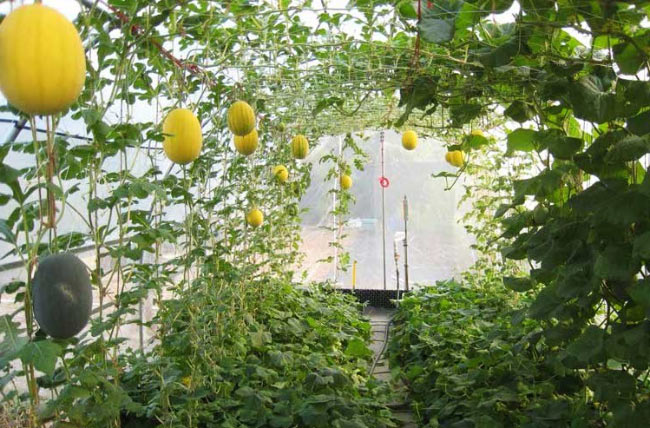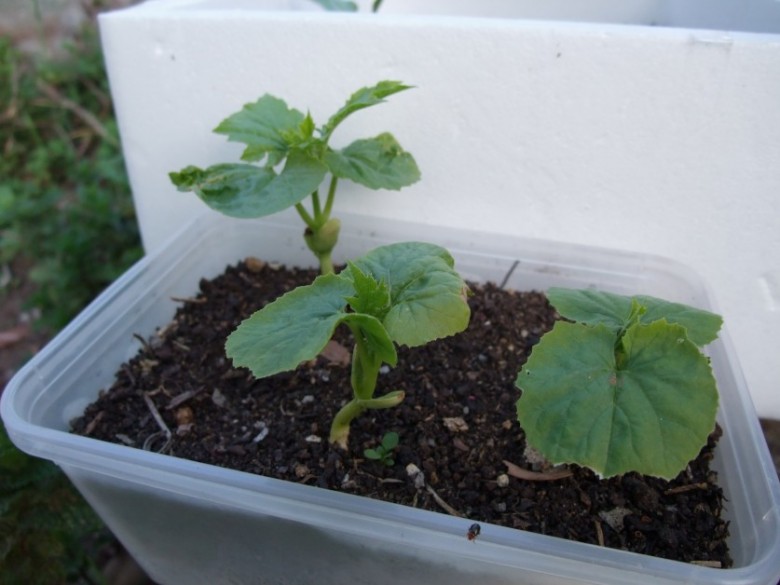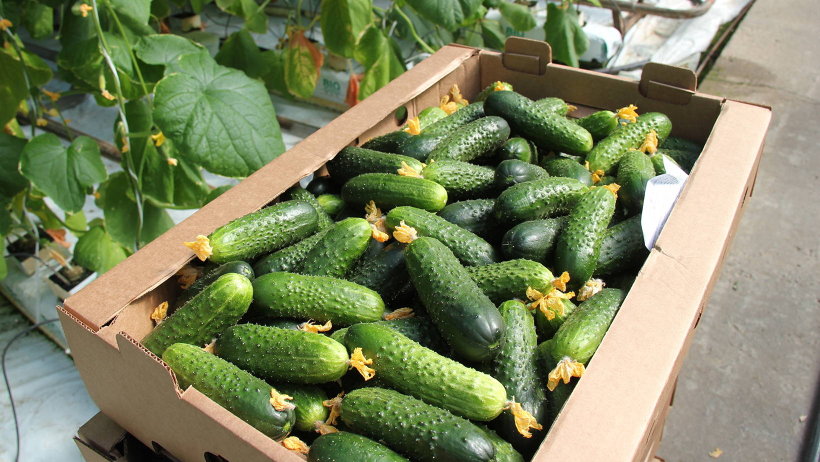Content:
- Briefly about crop agrotechnology for a high yield: soil, moisture, light or shade
- Planting and growing melons in a polycarbonate greenhouse
- Crop care: watering plants, and soil care. Is it necessary to feed the plant, and how to produce it
- Landing conditions in a greenhouse in the Leningrad region
- Tips and tricks for gardeners
Melon is one of the most delicious melon crops, sweet, juicy and aromatic. However, this plant is very thermophilic, therefore, it is grown outdoors only in the south of our country, in the Rostov and Astrakhan regions or in the Krasnodar Territory.
Briefly about crop agrotechnology for a high yield: soil, moisture, light or shade
This melon crop is quite capricious, it requires fertile soil, moderate soil moisture, as well as lighting throughout the day. If you apply all the necessary fertilizers, observe the irrigation regime (there should be no stagnation of moisture in the soil), and also provide lighting for 12-14 hours, you can get a large yield of melons in greenhouses.
What can you offer to gardeners from the Moscow region, Siberia or the Urals? The solution is simple - to grow this crop in polycarbonate greenhouses.
How to grow a melon in a greenhouse, the basic requirements for planting and caring for melons in a greenhouse are described below.
Planting and growing melons in a polycarbonate greenhouse
Growing melons in a greenhouse is not as easy as it seems at first glance. In greenhouses, you need to constantly maintain the temperature regime, make sure that the humidity is at the level of 60-65%, and also monitor the illumination, since the melon does not grow in the shade. For normal development and fruiting, it needs 14 hours of daylight hours.
The most suitable varieties of melon for growing in greenhouse conditions:
- Collective farmer;
- Canaria;
- Sharena;
- Augmented.
It is better to grow melon in greenhouses than in greenhouses. The greenhouse does not have the required height, so the melon bush will not be able to develop and bear fruit normally there.
In greenhouse conditions, this melon crop is grown by the seedling method.
The growing seedlings are planted in a permanent place in greenhouse beds along with pots that dissolve and fertilize the soil.
The beds in the greenhouse are prepared as follows:
- Soil is removed from the bed (to a depth of 0.2 m).
- A layer of drainage from branches, expanded clay and fine gravel is laid at the bottom of the trench.
- The next layer is composed of hay or grass.
- Next comes a layer of humus (as a last resort, you can use compost).
- From above the prepared bed is covered with the selected layer of soil.
- If the soil is acidic, you can add complex mineral fertilizer and lime together with humus.
- Then the prepared beds are watered with water at a temperature of about 35 ° C and covered with dark polyethylene on top, so that the earth warms up faster. In warm beds, the melon will grow and bear fruit much better.
When 3-4 permanent leaves appear on the seedlings, they can be planted on the beds in the closed ground. In heated greenhouses, melons can be harvested year-round, in unheated ones, depending on the growing region. Usually, two seedlings are planted in one planting hole, and as the lashes grow, they should be sent in different directions for growth.
For uniform illumination of melon lashes, trellises are installed in greenhouses. Approximately at a distance of 15 cm, two or three rows of wire are pulled on the trellises, to which the whips will be tied. With this method of cultivation, the stems and ripening fruits will not come into contact with the soil, therefore, the risk of plant disease with fungal and bacterial diseases will decrease.
During the growth of lashes in greenhouses, the temperature is maintained at about 28 ° C, and the average humidity is up to 80%. When the period of mass ripening of fruits begins, the humidity should be reduced to 65-70%. To control humidity, it is necessary to ventilate in a timely manner.
Shrub formation begins as the main stems grow. Indoors, such a procedure has to be carried out in order to restrain the growth of the vegetative part, since the space in the greenhouse is limited. If you do not pinch the sprouts, fewer ovaries will form on the stems, and the ripening fruits will not be as sweet and aromatic.
The first time you should pinch the bushes with your fingers when three real leaves appear on them.
After the formation of side shoots, two are left on each bush. These shoots are pinched when lateral stems also begin to form on them.
After 6 leaves appear, you can pinch the tops. In this case, the process of active fruit set begins.
In the process of formation, only the most powerful shoots are left. You should also carry out pinching on melon bushes. In this case, you need to leave several side stepsons, and pinch the rest so that they do not take away the nutrients necessary for the ripening of the crop.
Crop care: watering plants, and soil care. Is it necessary to feed the plant, and how to produce it
Melon care consists in adhering to agricultural techniques:
- temperature control;
- installation of fluorescent lamps if additional lighting is required;
- regular watering of the bushes with warm water;
- pollination of plants by hand.
Watering plants in a greenhouse is carried out only with warm water with a temperature of about 33 ° C. Cold water can lead to root rot and the death of bushes.
The number of waterings is increased as the fruits ripen. Watering should be done so that moisture does not get on the root collar, otherwise root rot will form on the roots.
Watering should not be too abundant. The root system of the melon is pivotal, the roots can go deep into the soil, receiving additional nutrients and moisture from there. Excessive moisture damages the roots and the entire plant - the bushes get sick, the fruits begin to crack and rot.
After watering, the soil around the bushes should be loosened until the melons are growing. Weeds are removed at the same time.
In spring and early summer, before flowering appears, fertilizing with a complex of minerals - potassium, phosphorus and nitrogen - should be applied.
- The first feeding is carried out when the first leaf appears on the seedlings.
- Next time, fertilizers are applied 12-14 days after transplanting seedlings into closed ground.
After the beginning of flowering, the dose of nitrogen in fertilizers is significantly reduced, increasing the amount of phosphorus and potassium fertilizers. During the period of flowering and ripening of fruits, fertilizing should be applied every 14 days with phosphorus-potassium fertilizers.
Landing conditions in a greenhouse in the Leningrad region
Basic recommendations for growing melon in the conditions of the Leningrad region:
- For cultivation, only early-ripening varieties of this melon crop (Rose of the Yugo-Vostoka, Skorospelka Kharkovskaya, Ogonyok and similar varieties) are chosen.
- Seedlings are grown at home, then transplanted into greenhouses.
- A transplant into a closed ground is done after the soil has warmed up to a temperature of 20 ° C to a depth of at least 8-9 cm.
- No more than 2-3 fruits are left on each plant so that they have time to ripen before the onset of cold weather.
- First, the lashes are tied to the trellises. As they ripen, they are untied, and the fruits are lowered to the ground, placing boards under them to prevent decay.
Melon cultivation in greenhouses is possible in the north of Russia, but subject to all agrotechnical rules.
Tips and tricks for gardeners
- When growing melons in greenhouses, one should not forget about the need to install heaters and additional lighting.
- As the lashes grow, you need to form bushes, removing unnecessary stepchildren, and tie the stems to the trellises so that the plants are illuminated from all sides by the rays of the sun.
Melons can be grown even in the Leningrad region or Siberian regions, but only in greenhouses. It is best to use polycarbonate greenhouses for these purposes. If you follow all the recommendations for planting and care, you can harvest good yields of this melon crop.














